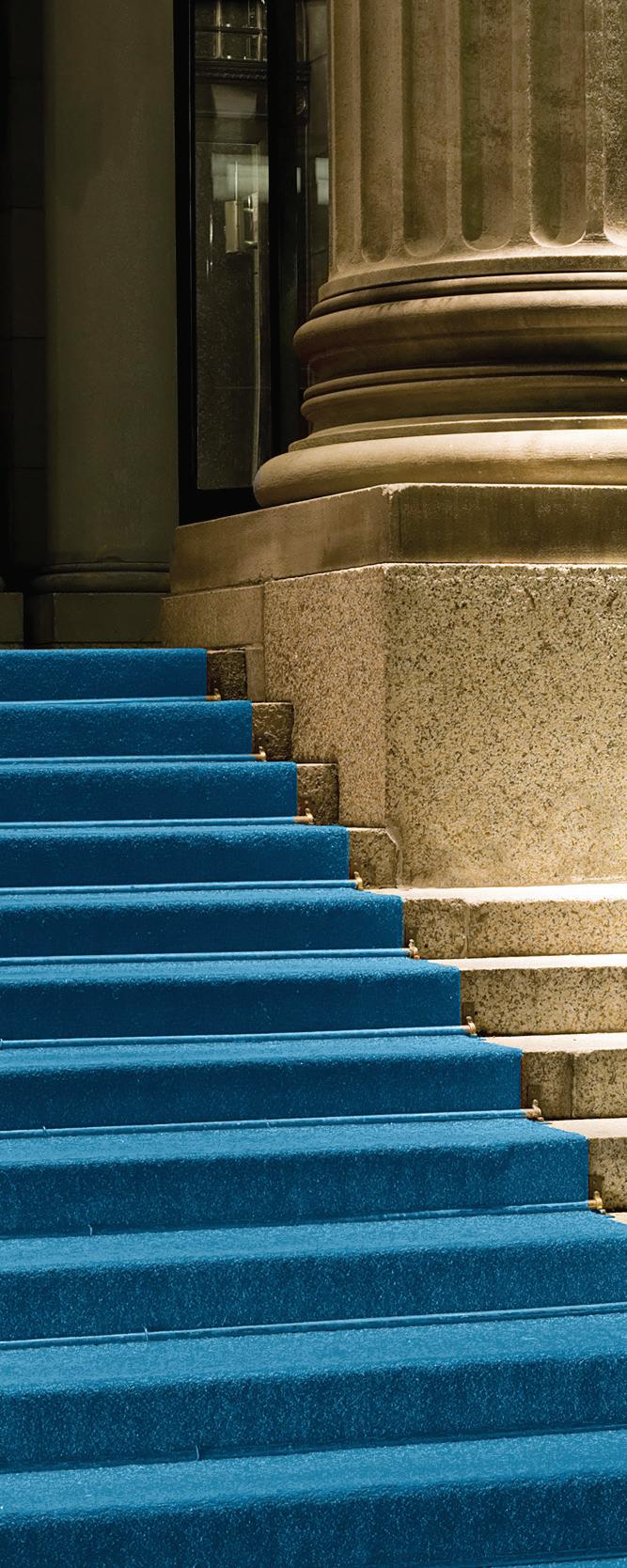



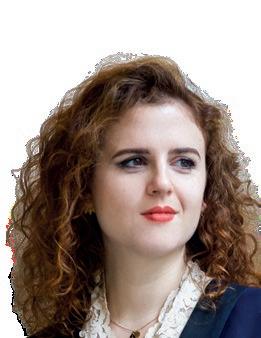



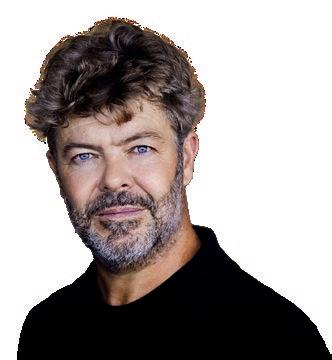




























Monteverdi Choir
Orchestre Révolutionnaire et Romantique
Pablo Heras-Casado – conductor
Friday 19 September 2025
St Martin-in-the-Fields, London
Scan the QR code or visit: www.monteverdi.co.uk/pages/newsletter
MOZART, SCHUBERT & BACH
Friday 19 September 2025
St Martin-in-the-Fields, London
Sunday 21 September 2025
Teatro Amintore Galli, Rimini
Monteverdi Choir & Orchestras presents
Monteverdi Choir
Orchestre Révolutionnaire et Romantique
Pablo Heras-Casado – conductor
Louise Alder – soprano
Eva Zaïcik – mezzo-soprano
Laurence Kilsby – tenor
William Thomas – bass
from the MCO Team
After a summer of performances ranging from Bach motets with Masaaki Suzuki here at our London home, to Tavener’s epic The Veil of the Temple at the outset of the Edinburgh International Festival, tonight marks both the opening of MCO’s 2025/26 season, and the highly-anticipated debut of acclaimed Spanish conductor Pablo Heras-Casado.
The Orchestre Révolutionnaire et Romantique’s raison d’être is the music of the Nineteenth Century – bringing fresh insights to this repertoire through compelling performances on period instruments. Over the next few years the collaboration with Pablo Heras-Casado will build on the orchestra’s extraordinary legacy – delving ever more deeply into the symphonic and operatic music of the Romantic period, revisiting music for which the ORR is world-renowned, and expanding to explore repertoire that is entirely new.
We begin with Schubert and his musical forbears, Mozart and J. S. Bach, with the ORR joined by the Monteverdi Choir. When he heard Bach’s motet ‘Singet dem Herrn’ in 1789, Mozart cried out: ‘Now, there is something one can learn from!’ He died in December 1791, having completed two thirds of his Requiem. In October 1816, Schubert wrote: ‘As though from afar, the magic notes of Mozart’s music still gently haunt me.’ That same month, he completed his Fifth Symphony, the most Mozartian of all his orchestral works.
BACH Singet dem Herrn ein neues Lied, BWV 225
SCHUBERT Symphony No. 5 in B-flat major, D 485 interval
MOZART Requiem in D minor, K 626

MOZART, SCHUBERT & BACH
Scan to listen on Spotify

Richard Wigmore
Dr Andrew Frampton
J. S. BACH (1685–1750):
Singet dem Herrn ein neues Lied, BWV 225
It was typical of Johann Sebastian Bach to take the seventeenth-century genre of the German motet, mingling biblical and Protestant hymn texts, and raise it to new heights of contrapuntal sophistication and expressive intensity. Most of his seven surviving motets –eight if we include the disputed ‘Lobet den Herrn’ – seem to have been associated with burial or memorial services. But motets were performed on other occasions in the Lutheran liturgy, including New Year’s Day and Reformation Day. Apart from their liturgical function, the motets were ideal teaching pieces, helping Bach’s Leipzig charges to come to grips with various techniques of polyphonic and chorale writing and hone their breath control and agility in florid coloratura passages.
Surviving sources suggest that the double-choir motet ‘Singet dem Herrn ein neues Lied’, to text based on Psalms 149 and (for the final section) 150, dates from 1726-27. Given the extrovert tone of the outer sections, it was long assumed that Bach composed the motet for a Leipzig New Year’s celebration, or perhaps a royal birthday. But the German scholar Meinhof Brüser has recently assembled evidence that ‘Singet dem Herrn’ was probably written for the boys of St Thomas’s choir following
the death of the first young singer engaged by Bach for the choir.
The motet opens with a choral tapestry of dazzling brilliance in which Bach seems to imagine the two choirs as bells and/or trumpets celebrating God’s glory to the ends of the earth. At the opening the upper voices of choir one sound their imitative bell-chimes against long-held bass pedals and excited cries of ‘Singet’ in the second choir; exemplifying the music’s kaleidoscopically changing textures, the choirs then swap roles. ‘Israel freuet sich’ provokes antiphonal whoops of joy from the two choirs, while at ‘Die Kinder Zion’ the sopranos of choir one launch a fugue that grows ever more rollicking as it proceeds. As so often, Bach demands from his choral singers feats of virtuosity that other composers reserved for instruments.
After this eruption of cosmic energy, the central section provides much-needed repose. The second choir sings a fourpart harmonisation of traditional chorale melody, in alternation with a lyrical, freely imitative ‘aria’ (Bach’s term) for the first choir. Jubilation returns as the two choirs vie with each other to ‘praise the Lord for his mighty acts’ (with due bursts of coloratura on ‘lobet’), then come together for the dancing fugal ‘Alleluja’.
The motets were the only part of Bach’s choral output that remained in use in the
main Leipzig churches long after his death. Mozart heard ‘Singet dem Herrn’ in the Thomaskirche during his visit to the city in April 1789. According to one plausible, if unverified, story, he was so overwhelmed ‘that he spread the music out on the floor, exclaiming ‘At last, here’s something one can learn from!’
FRANZ SCHUBERT (1797–1828):
Symphony No. 5 in B-flat, D 485
i. Allegro
ii. Andante con moto
iii. Menuetto – Allegro molto
iv. Allegro vivace
The years 1815 and 1816 were the most phenomenally productive in Schubert’s
short life. Towards the end of 1814, the seventeen-year-old composer had become a reluctant teacher at his father’s primary school, supplementing his paltry income by giving private music lessons. He played the viola in the family string quartet, and in the small orchestra that met weekly at the houses of the Viennese merchants Franz Frischling and (from early 1816), Otto Hatwig. Twice a week he had lessons with the venerable Kapellmeister Antonio Salieri, a survivor from the age of Mozart. Yet amid all this activity he composed prodigiously: four symphonies (Nos. 2-5), three masses, shorter sacred works, chamber works, piano sonatas, part-songs, four one-act operas, and

Johann Gottfried Krugner (1684-1769): Thomaskirche and School in Leipzig
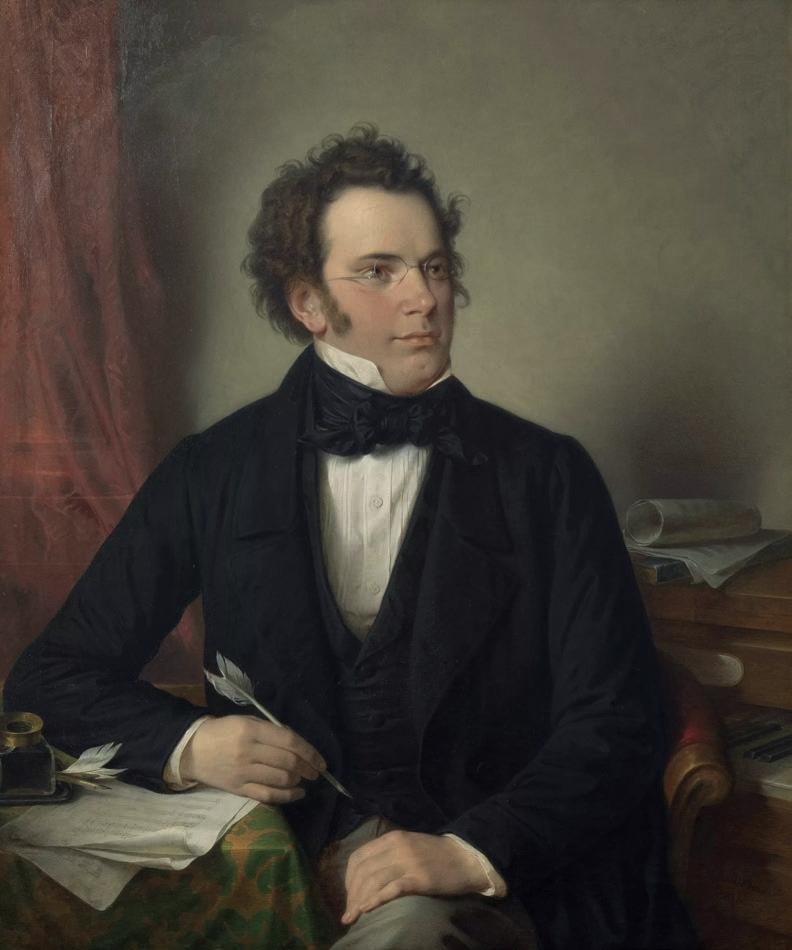
over 250 solo songs, many among the world’s best-loved.
While Schubert had already found his own individual voice in song, his instrumental works of 1815-16 still lean heavily on the Classical trinity of Haydn, Mozart and Beethoven. Mozart, above all, was his idol. After hearing a performance of a string quintet, possibly the G minor, in June 1816 Schubert wrote in his diary: ‘As from afar, the magic notes of Mozart’s music still gently haunt me. They show us in the darkness of this life a bright, clear, lovely distance…O Mozart, immortal Mozart, how many comforting glimpses of a brighter, better life have you brought into our souls.’ No Schubert work is more saturated with the spirit of Mozart, especially his Symphony No. 40 in
Wilhelm August Rieder (1796–1880): Franz Schubert
G minor, than the Fifth Symphony, completed on 3 October 1816. One of the composer’s friends aptly summed it up as ‘a charming symphony in B-flat without trumpets or drums’. Scored for a Haydn-Mozart-scaled chamber orchestra (there are no clarinets, and only a single flute), this is the most intimate of all Schubert’s symphonies: limpid in texture, compact in its proportions, Classical in the cut of its themes and the formal grace of its cadences. There are no aspirations to grandeur. Everything is crisp, economical and exquisitely polished.
Alone among the early symphonies, No. 5 has no slow introduction. Yet from the symphony’s opening four-bar ‘curtain’ the invention has a vernal freshness. The springy main theme,
with its charming echoes from cellos and basses, begins with short phrases, then broadens delightfully. There is a hint of drama when violins and cellos spar over a fragment of the theme. But geniality is restored with the suave second theme, a simpler relative of the equivalent theme in the first movement of Mozart’s Symphony No. 40. The succinct development works the ‘curtain’ and variations of the main theme in new combinations, before the music glides gracefully into the recapitulation. This begins in the key of the subdominant, E-flat. Although Schubert could have saved time by simply transposing the exposition from here onwards, he wrote a new, expanded transition to the second theme, and crowned the movement with a brief, soaring climax.
As the musicologist Donald Tovey put it, the theme of the E-flat Andante con moto is ‘Schubertized Mozart’, audibly related to the gentle minuet finale of Mozart’s Violin Sonata K 377. But where Mozart’s theme is decorous, Schubert’s is Romantically sensuous. There are piquant chromatic twists in the theme’s second half, while a twicerecurring contrasting episode, in deep flat keys (first C-flat, then G-flat), features yearning dialogues between violins and woodwind. There is more ‘Schubertized Mozart’ in the G minor Minuet, a surprising choice of key within a symphony in B-flat. Both the energetic main section, with its truculent chromaticisms, and pastoral G major Trio sound like simplified – and distinctly rustic – paraphrases of the Minuet in Symphony No. 40. In the finale, though, the Mozartian grace that Schubert absorbed so effortlessly is allied to a roguish wit that owes more to Haydn. Yet, as ever, there is no sense of pastiche
in this, the most perfect and lovable of Schubert’s early symphonies.
Requiem in D minor, K 626
The origins of Mozart’s last, unfinished work quickly acquired a mysterious, even lurid aura: a gaunt stranger in a long cloak – grey or black, according to taste – appearing like a ghost and commissioning Mozart to compose a Requiem under conditions of total secrecy. In romantic legend the stranger became an emissary from another world, a harbinger of Mozart’s own death.
The truth, inevitably, was more prosaic. In the summer of 1791, while Mozart was at work on Die Zauberflöte, a messenger delivered an unsigned letter full of flattering phrases asking him to compose a Requiem and to name his price for the work. Mozart, in cheerful spirits, it would seem, wrote back to accept, stating his fee. A few days later the messenger reappeared with the payment and the promise of a generous bonus on receipt of the work, requesting only that Mozart should make no attempt to discover the identity of his patron.
As Mozart probably found out at an early stage, the patron was one Franz von Walsegg, a count with ideas above his artistic station. One of his specialities was commissioning works from reputable composers, copying them and then passing them off as his own to guests, who were all too happy to go along with the charade. Walsegg intended the Requiem as a memorial to his young wife, who had died in February 1791.
Absorbed by work on Die Zauberflöte and La clemenza di Tito, Mozart could only start to draft the Requiem in early October, when his health was already beginning to fail. Years later his wife Constanze reported – how accurately we shall never know – that Mozart was convinced he had been poisoned, and was writing the Requiem for himself (a notion fervidly elaborated in Peter Shaffer’s Amadeus, which in turn draws on Pushkin’s ‘little tragedy’ Mozart and Salieri). When he died on 5 December, Mozart had completed only the Introit and (save for some gaps in the orchestration) the Kyrie. For all the movements from the Dies irae to the Hostias he had composed the voice parts and a figured bass, except in the case of the Lacrimosa, where Mozart’s work breaks off after eight bars.
After Mozart’s death Constanze, desperately in need of money, entrusted the completion of the Requiem to one of the composer’s pupils, Joseph Eybler; but after filling in some of the orchestration he abandoned the task, which passed to another pupil, Franz Süssmayr, who, we can guess, had discussed the work with Mozart. Süssmayr duly finished the Requiem, later claiming that the Sanctus, Benedictus and Agnus Dei were entirely his own work. Constanze did finally deliver the score to Walsegg, though her initial attempt to have the Requiem printed was scotched by the threat of a lawsuit, with Walsegg asserting sole ownership. The first public performance took place on 2 January 1793, at a Viennese benefit concert for Constanze organised by Baron Gottfried Van Swieten.

Süssmayr’s contributions have come in for some harsh criticism, and musicians from Richard Strauss onwards have tried their hands at completing Mozart’s torso. But Süssmayr’s version, performed this evening, is still the one most often heard. If his part-writing and orchestration are sometimes clumsy, and his Sanctus and Osanna uncomfortably brief, he did have the unrepeatable advantage of being close to Mozart in the last weeks of his life. And Süssmayr’s solution of repeating the opening movements at the end may indeed reflect Mozart’s own plan for the work, following the example of several of his earlier masses. Constanze claimed that she passed sketches to Süssmayr after her husband’s death; and it is hard to believe that there is no genuine Mozart in the Benedictus or the sombre Agnus Dei.
Like the monumental unfinished C minor mass, the Requiem makes creative capital from Mozart’s studies of Bach and Handel, above all in the two great fugal choruses: the Kyrie, based on the same Baroque tag as ‘And with his stripes’ in Messiah, and Quam olim Abrahae, with its angular, laconic subject and cumulative chromatic intensity. Other movements, including the cataclysmic Dies irae (shades here of Mozart’s D minor piano concerto, K 466, and Don Giovanni’s descent to hell) and the Hostias, set in a mellow, assuaging E-flat, are almost entirely homophonic in style. In the Tuba mirum we seem to hear the voice of the Commendatore, balefully accompanied by trombone, proclaiming the crack of doom. The Lacrimosa unfolds as a sorrowfully lilting choral aria – a world away from the wailing
anguish of the settings by Berlioz and Verdi. Whatever the exact MozartSüssmayr mix, the Benedictus is a gentle, songful movement for soloists, in a long tradition of Austrian settings of this comforting text.
Elsewhere Mozart fuses Baroque counterpoint with his own lyricism, drama and harmonic subtlety: in, say, the Requiem aeternam, with its poignant contrast between the leaden tread of the opening and the consolatory soprano solo at Te decet hymnus, based on a traditional plainchant melody; the theatrically conceived Rex tremendae, moving from violence to hushed imprecation; or the equally theatrical Confutatis, where churning string ostinatos paint a graphic picture of tormented souls writhing in hell. Most moving of all, perhaps, is the Recordare for solo quartet, a fusion of ancient and modern in which Mozart uses Baroque-style imitative textures with a tenderly personal expressiveness.
EIN NEUES LIED, BWV 225
Singet dem Herrn ein neues Lied, die Gemeine der Heiligen sollen ihn loben. Israel freue sich des, der ihn gemacht hat. Die Kinder Zion sei’n fröhlich über ihrem Könige, sie sollen loben seinen Namen im Reihen; mit Pauken und mit Harfen sollen sie ihm spielen.
Wie sich ein Vater erbarmet
Gott, nimm dich ferner unser an, über seine junge Kinderlein, so tut der Herr uns allen, so wir ihn kindlich fürchten rein. Er kennt das arm Gemächte, Gott weiß, wir sind nur Staub, denn ohne dich ist nichts getan mit allen unsern Sachen.
Gleichwie das Gras vom Rechen, ein Blum und fallend Laub!
Der Wind nur drüber wehet, so ist es nicht mehr da, Drum sei du unser Schirm und Licht, und trügt uns unsre Hoffnung nicht, so wirst du’s ferner machen. Also der Mensch vergehet, sein End, das ist ihm nah.
Wohl dem, der sich nur steif und fest auf dich und deine Huld verlässt
Lobet den Herrn in seinen Taten, lobet ihn in seiner großen Herrlichkeit!
Alles, was Odem hat, lobe den Herrn. Halleluja!
Psalm 149:1-3, Psalm 150:2,6, Johann Gramann
Sing unto the Lord a new song, the congregation of saints shall praise him. Let Israel rejoice in him that made him. The children of Sion shall rejoice in their king, they shall praise his name with dancing, and they shall play to him with drums and harps.
As a father takes pity God, continue to take care of us, on his own young children, so does the Lord pity us all, if we fear him like pure children. He knows our poor estate, God knows that we are but dust, for without thee all human endeavour is nothing. Like grass that is reaped, the fading flower and falling leaf. The wind only has to blow over it, and it is there no more.
Be therefore our shield and light, and if our hope does not deceive us, thou shalt continue to be so. Man thus passes away, and his end is near.
Blessed is he who steadfastly relies on thee and thy grace.
Praise the Lord for his mighty deeds, praise him according to his excellent greatness! Let everything that hath breath praise the Lord. Alleluia!
Translation: Richard Stokes
i. Introitus
Requiem aeternam dona eis, Domine, et lux perpetua luceat eis. Te decet hymnus, Deus in Sion, et tibi reddetur votum in Jerusalem: Exaudi orationem meam, ad te omnis caro veniet.
ii. Kyrie
Kyrie eleison. Christe eleison. Kyrie eleison.
iii. Sequentia
Dies irae, dies illa, solvet saeclum in favilla, teste David cum Sibylla. Quantus tremor est futurus, quando judex est venturus, cuncta stricte discussurus!
Tuba mirum spargens sonum per sepulchra regionum, coget omnes ante thronum. Mors stupebit et natura cum resurget creatura judicanti responsura. Liber scriptus proferetur in quo totum continetur unde mundus judicetur. Judex ergo cum sedebit, quidquid latet apparebit, nil inultum remanebit. Quid sum miser tunc dicturus? Quem patronum rogaturus, cum vix Justus sit securus?
Rex tremendae majestatis, qui salvandos salvas gratis, salva me, fons pietatis.
Recordare Jesu pie, quod sum causa tuae viae; ne me perdas illi die. Quaerens me, sedisti lassus, redemisti crucem passus;
Eternal rest grant unto them, O Lord, and let light perpetual shine upon them. A hymn, O God, becometh thee in Sion, and a vow shall be paid to thee in Jerusalem. Hear my prayer, all flesh shall come to thee.
Lord have mercy upon us. Christ have mercy upon us. Lord have mercy upon us.
Day of wrath, that day will dissolve the world in ashes, as David and the Sibyl prophesied. How great a terror there will be when the judge shall come to try all things truly!
The trumpet, spreading wondrous sound through the tombs of every land, will gather all before the throne. Death and nature shall be astonished When creation rises again To answer to the judge. A book shall be brought forth containing everything for which the world shall be judged. And so, when the judge sits, whatever is hidden shall be revealed, nothing shall remain unavenged. What shall I, wretch, say? Whom shall I ask to plead for me, when even the righteous aren’t safe?
O King of dreadful majesty, who freely saved the redeemed, save me, O fountain of goodness.
Recall, merciful Jesus, that I was the reason for thy journey; do not destroy me on that day. Seeking me, thou didst sit down weary, Didst suffer the cross to redeem me;
tantus labor non sit cassus. Juste judex ultionis, donum fac remissionis ante diem rationis.
Ingemisco tanquam reus, culpa rubet vultus meus; supplicanti parce, Deus. Qui Mariam absolvisti, et latronem exaudisti, mihi quoque spem dedisti. Preces meae non sunt dignae, sed tu bonus fac benigne, ne perenni cremer igne. Inter oves locum praesta, et ab haedia me sequestra, statuens in parte dextra.
Confutatis maledictis flammis acribus addictis, vocame cum benedictis. Oro supplex et acclinis, cor contritum quasi cinis; gere curam mei finis.
Lacrimosa dies illa, qua resurget ex favilla judicandus homo reus. Huic ergo parce Deus, pie Jesu Domine. Dona eis requiem. Amen.
iv. Offertorium
Domine Jesu Christe, Rex gloriae, libera animas omnium fidelium defunctorum de poenis inferni et de profundo lacu. Libera eas de ore leonis, ne absorbeat eas tartarus, ne cadant in obscurum, sed signifier sanctus Michael repraesentet eas in lucem sanctam, quam olim Abrahae promisisti et semini ejus.
Hostias et preces tibi, Domine, laudis offerimus; tu suscipe pro animabus illis
let not such great pains have been in vain. Last judge of vengeance, give me the gift of redemption before the day of reckoning.
I groan as one accused, and my face blushes with guilt; spare a supplicant, O God.
Thou who didst absolve Mary Magdalene, and heard the prayer of the thief, hast given hope to me also.
My prayers are not worthy, but in thy goodness show mercy, lest I burn in everlasting fire.
Grant me a place among the sheep, and separate me from the goats, setting me at thy right hand.
When the damned are confounded and consigned to fierce flames, call me with the blessed. Kneeling, a supplicant, I pray, my heart contrite as ashes; take thou my ending into thy care.
That day is one of weeping, when from the ashes will rise the guilty man to be judged. Spare this one, O God, merciful Lord Jesus. Grant them rest. Amen.
O Lord Jesus Christ, King of glory, deliver the souls of the faithful departed from the pains of hell and from the deep pit. Deliver them from the mouth of the lion, that hell may not swallow them up, and let the holy standard-bearer Michael bring them into the holy light, which thou didst promise of old to Abraham and his seed.
We offer unto thee, O Lord, sacrifices and prayers of praise; receive them on behalf of those souls
quarum hodie memoriam facimus. Fac eas, Domine, de morte transire ad vitam, quam olim Abrahae promisisti et semini ejus.
v. Sanctus
Sanctus, sanctus, sanctus, Dominus Deus Sabaoth.
Pleni sunt caeli et terra gloria tua. Osanna in excelsis.
vi. Benedictus
Benedictus qui venit in nomine Domini. Osanna in excelsis.
vii. Agnus Dei
Agnus Dei, qui tollis peccata mundi, dona eis requiem.
Agnus Dei, qui tollis peccata mundi, dona eis requiem sempiternam.
viii. Communio
Lux aeterna luceat eis, Domine, cum sanctis tuis in aeternum, quia pius es.
Requiem aeternam dona eis, Domine, et lux perpetua luceat eis, cum sanctis tuis in aeternum, quia pius es.
whom we commemorate this day. Grant them, O Lord, to pass from death to life, which thou didst promise of old to Abraham and his seed.
Holy, holy, holy, Lord God of Sabaoth.
Heaven and earth and full of thy glory. Hosanna in the highest.
Blessed is he that cometh in the name of the Lord.
Hosanna in the highest.
Lamb of God, who takest away the sins of the world, grant them rest.
Lamb of God, who takest away the sins of the world, grant them eternal rest.
Let everlasting light shine upon them, O Lord, with thy saints forever, for thou art merciful.
Eternal rest grant unto them, O Lord, and let light perpetual shine upon them, with thy saints forever, for thou art merciful.
Translation: 2008 London Symphony Orchestra Ltd. (reproduced by kind permission)
Pablo Heras-Casado works regularly with the world’s leading orchestras, including Philharmonia Orchestra, Orchestre Philharmonique de Radio France, Staatskapelle Berlin, NDR Elbphilharmonie Orchestra, Vienna Symphony, Filarmonica della Scala, and Cleveland Orchestra. His other engagements include appearances with Berlin and Vienna Philharmonics, Bavarian Radio Symphony Orchestra, Royal Concertgebouw Orchestra, Orchestre de Paris, London Symphony Orchestra, Chicago Symphony Orchestra, Philadelphia Orchestra, and Los Angeles Philharmonic.
Pablo Heras-Casado has established himself as one of the leading Wagner conductors of his time, particularly through his acclaimed debut at the Bayreuth Festival with Wagner’s Parsifal in 2023 and his successful return the following years. Parsifal is planned once more for 2026, followed by a new production of Der Ring des Nibelungen in 2028. Heras-Casado is a regular guest at the Wiener Staatsoper, where he has conducted the Monteverdi trilogy (L’Orfeo, L’incoronazione di Poppea, Il ritorno di Ulisse in patria), Mozart’s La clemenza di Tito, and Ligeti’s Le Grand Macabre. In 2025/26, he returns to Vienna for a new production of La clemenza di Tito and revivals of Le Grand Macabre and Wagner’s Ring cycle. Having launched a new Wagner’s Ring cycle
at the Opéra National de Paris in January 2025 with Das Rheingold, Heras-Casado returns in 2025/26 to conduct Die Walküre and Siegfried. He also led Wagner’s Die Meistersinger von Nürnberg at the Teatro Real in Madrid, where he was Principal Guest Conductor until July 2025.
Heras-Casado’s extensive discography with Harmonia Mundi includes an ongoing series titled Die Neue Romantik, featuring works by Mendelssohn and Schubert with Freiburger Barockorchester, and most recently Bruckner’s Symphony No.4 with Anima Eterna Brugge. Other releases include a series for Beethoven’s 250th anniversary, works by Manuel de Falla, Debussy, all symphonies by Schumann and Bartók, and Stravinsky’s Le Sacre du printemps. In 2024, the recording of the successful Bayreuth Parsifal production was released on CD and video by Deutsche Grammophon. His work has been honored with numerous awards, including two German Record Critics’ Awards, two Diapason d’Or, and a Latin Grammy. He was named 2025 Best Conductor by the Oper! Awards and 2024 Conductor of the Year by Opernwelt. In 2025, he also received the Premios Ópera XXI: Premio a la Dirección Musical.
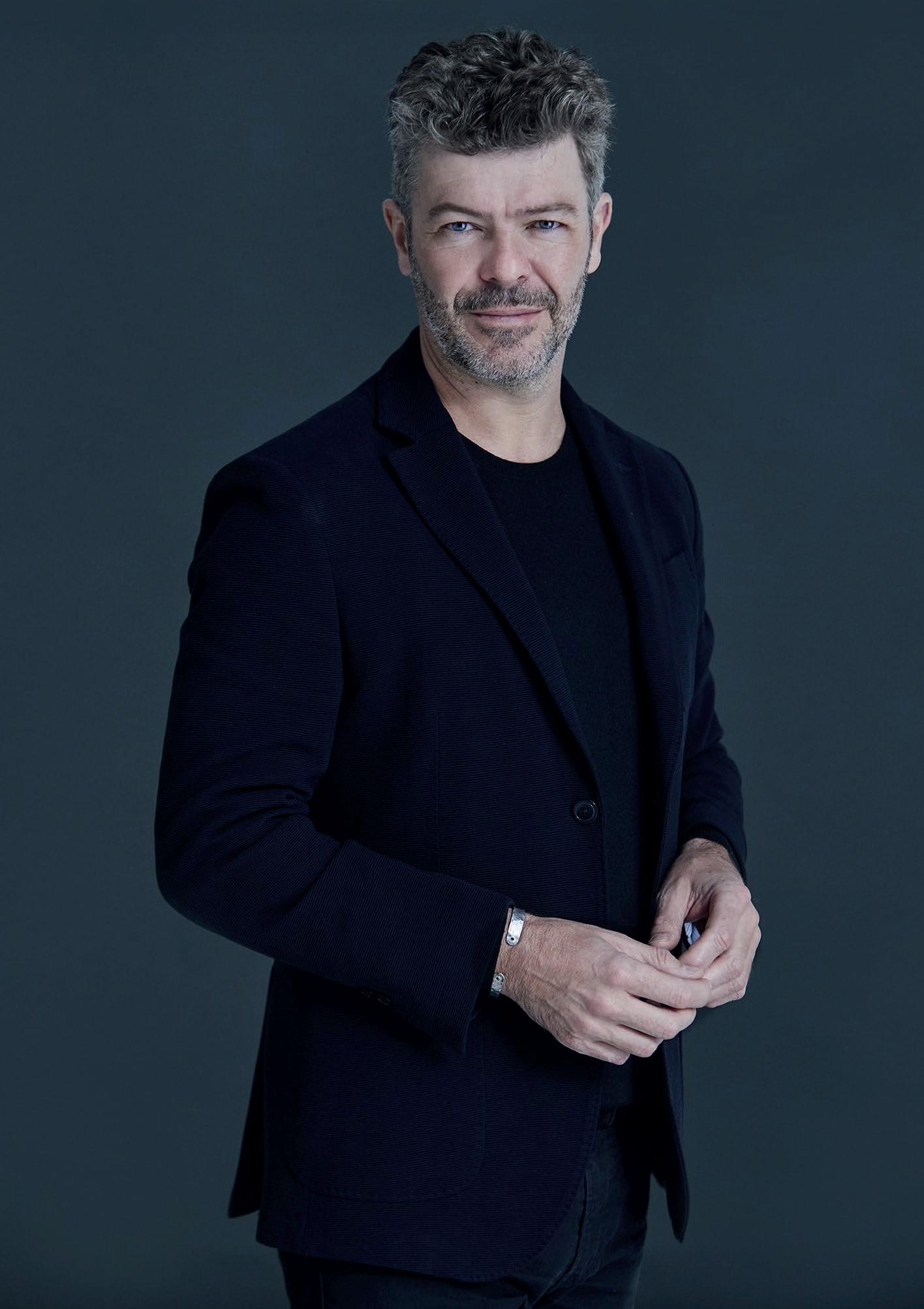

soprano
British soprano Louise Alder is one of today’s most in-demand artists, praised as “an instinctive singing-actress” (The Arts Desk) and “a terrific talent, combining a big, lustrous voice with flawless intonation and keen intelligence” (The Times). Equally at home on the opera, concert and recital stage, she has performed at major venues including the Royal Opera House, Wiener Staatsoper, Glyndebourne Festival, Bayerische Staatsoper, Carnegie Hall, and Wigmore Hall, where she held a celebrated artistic residency in 2024. Following her appearance as soloist at the Last Night of the Proms, she makes her Metropolitan Opera debut in the 2025–26 season. Upcoming highlights include returns to Covent Garden as Susanna (Le nozze di Figaro) and to the Bayerische Staatsoper for their Festspiele Barokkonzert, as well as her Met debut as Zdenka (Arabella). She also sings Semele at Dutch National Opera, Romilda (Serse) with the Academy of Ancient Music, and Fiordiligi (Così fan tutte) with Wiener Staatsoper in Monte Carlo. On the concert stage, she performs Mahler’s Symphony No. 2, Haydn’s Paukenmesse, and Mozart’s Requiem, and gives recitals with Julius Drake, Joseph Middleton, and Mauro Peter, including a performance at Muziekgebouw.
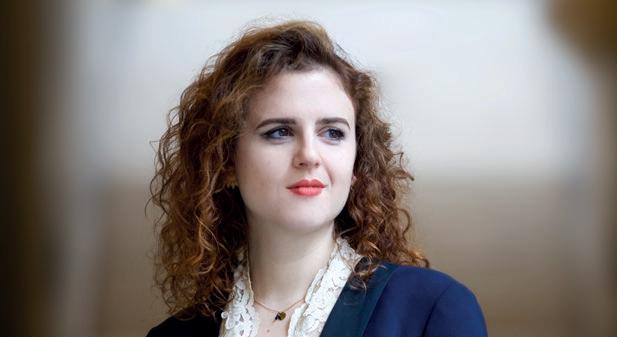
mezzo-soprano
Renowned for the beauty, fullness and flexibility of her voice, Eva Zaïcik has established herself as one of the most capable singers of her generation. Her already considerable career has seen her collaborate with conductors including William Christie, Thomas Hengelbrock, Christophe Rousset, Philippe Herreweghe, Laurence Equilbey and Alain Altinoglu.
Her operatic repertoire includes the roles of Rosina (Il barbiere di Siviglia, Rossini) at the Théâtre du Capitole in Toulouse; Vénus in Idoménée by Campra at the Opéra de Lille and at the Staatsoper in Berlin; Lola in Cavalleria Rusticana at the Festspielhaus in Baden.
Eva’s concert repertoire includes the performance of Mozart’s Requiem and Beethoven’s Missa solemnis with Thomas Hengelbrock and the Balthazar Neumann Ensemble. She also joined Emmanuelle Haïm for Handel’s Dixit Dominus with the Los Angeles Philharmonic and took part into the reopening concerts of NotreDame de Paris.
In 2025/2026, her performances will include Wagner’s Wesendock-Lieder with Leopold Hager and the Philharmonique du Luxembourg; Ravel’s L’Enfant et les Sortilèges with Alain Altinoglu and the hr-Sinfonieorchester Frankfurt; Rossini’s Petite Messe solennelle with Thomas Hengelbrock and the Balthazar Neumann Ensemble and Beethoven’s Symphony No. 9 with Sasha Goetzel and the Orchestre des Pays de la Loire.

tenor
British tenor Laurence Kilsby is rapidly gaining international recognition for his vivid stage presence, expressive musicianship, and wide-ranging repertoire. In the 2025/26 season, Laurence makes his Glyndebourne debut as the Novice in Billy Budd, sings Lurcanio in Ariodante at Opéra de Versailles, and returns to the BBC Proms with the BBC Symphony Orchestra under Sakari Oramo. He performs the MatthäusPassion with the Concertgebouworkest and Klaus Mäkelä, tours the UK with Britten’s Serenade with the Sinfonia of London and John Wilson, and makes his US concert debut with the Orchestra of St. Luke’s in Beethoven’s Symphony No. 9, conducted by Raphaël Pichon.
Continuing his regular collaboration with Pichon and Ensemble Pygmalion, Laurence joins them for a tour of the MatthäusPassion and appearances at the Adelaide Festival. He also tours Handel’s Theodora with Jupiter Ensemble and Thomas Dunn, and appears in recital with pianist Ella O’Neill at both Madrid’s Fundación Juan March and the Théâtre de l’Athénée in Paris. His debut album with O’Neill, AWAKENINGS, was released last season. Other appearances include the Opéra national de Paris, Opéra national du Rhin, Opéra Comique, and the Aix-en- Provence and Innsbruck Early Music Festivals, as well as performances with the Rotterdam Philharmonic, BBC Symphony Orchestra, Orchestre Philharmonique de Radio France, and RTÉ National Symphony Orchestra.

A graduate of the Opera Course at the Guildhall School of Music and Drama and recipient of a number of major awards, British bass William Thomas is fast making a name for himself as one of today’s most promising young singers.
His recent operatic appearances have included roles for the Wiener Staatsoper; the Opéra national de Paris; La Scala, Milan; the Royal Ballet and Opera; the Bayerische Staatsoper and the Glyndebourne and Seiji Ozawa Matsumoto Festivals. In concert he has appeared at the BBC Proms and the Salzburg and Edinburgh Festivals.
Operatic roles in his 2025/26 season include Hebrew in Samson et Dalila for the Royal Ballet and Opera; Mr Flint in Billy Budd for the Glyndebourne Festival; and Ormonte in Parthenope for the English National Opera. His many concert engagements include Roméo et Juliette with the Symphonieorchester des Bayerischen Rundfunks/Robin Ticciati; L’enfance du Christ with the Orquestra de la Comunitat Valenciana/Sir Mark Elder; The Dream of Gerontius with the London Symphony Orchestra/Sir Antonio Pappano; and the Johannes-Passion with Il Pomo d’Oro/Maxim Emelyanychev.
For over 60 years the Monteverdi Choir has been recognised as one of the greatest and most influential choirs in the world. Through a combination of consummate technique and historically-informed performance practice, the Choir constantly strives to bring fresh perspectives, immediacy and drama to its performances.
The recipient of many awards, the Monteverdi Choir was named ‘Best Choir’ at the 2024 Oper! Awards, with the jury noting that: “At festivals, on concert tours and in their numerous recordings, this is an ensemble whose quality will always leave the listener speechless.”
Fresh from celebrating its 60th anniversary in 2024, the Choirs 2025 programme has a range of concerts and projects in support of MCO’s expansion of its repertoire and conductor collaborations. This includes the opening concert of the Edinburgh International Festival, performing John Tavener’s monumental The Veil of The Temple as the central and only professional choir involved. The Choir previously commissioned John Tavener’s The World is Burning to celebrate its 30th anniversary in 1993. The Choir also performed ‘Sing to the Lord a New Song’, featuring a selection of works by Purcell, Bach and Handel (including Dixit Dominus) conducted by Jonathan Sells, who was appointed Choir Director in March 2025.
Other highlights in 2025 include Bach with Masaaki Suzuki, semi-staged Rossini with Jakob Lehmann, and Handel’s Messiah with Christophe Rousset. On Good Friday 2025, the MCO’s own recording label, Soli Deo Gloria, released its first new recording since before the global pandemic with an album of Bruckner and Gesualdo motets recorded live in concert in October 2024, conducted by Jonathan Sells. Later this month, Soli Deo Gloria will release an album of Charpentier conducted by Christophe Rousset that was toured across Europe in December of 2024.
The Choir’s anniversary season in 2024 opened with three concerts at Amsterdam’s Concertgebouw conducted by Dinis Sousa. These performances were followed by Handel’s Israel in Egypt conducted by Peter Whelan in London and across Europe; Beethoven’s Mass in C major and Symphony No. 9 in London and Paris; and Bach’s sacred motets in London and Leipzig conducted by Jonathan Sells, who then returned
to conduct the Choir in performances of Bruckner and Gesualdo motets in Ely, Oxford and London.
Founded in 1964 by John Eliot Gardiner, the Monteverdi Choir has released over 150 recordings and won numerous prizes. In 2023, the Choir and English Baroque were honoured to perform at the Coronation of HM The King, with The Telegraph proclaiming “if the Monteverdi Choir isn’t singing when I get to the gates of Heaven, I want my money back.”
The Monteverdi Choir has dominated the choral scene worldwide for more than 50 years.” The Guardian
Two hours of musical delight...the Monteverdi Choir displayed such effortless virtuosity...leaving the audience in awe.” Musica (Italy)
September 2025
Choir Director: Jonathan Sells
Soprano
Rachel Allen
Milly Atkinson *
Jennifer Clark
Lucy Knight
Charlotte La Thrope
Elizabeth Nurse †
Theano Papadaki
Rebecca Ramsey
Cressida Sharp
Áine Smith *
Claire Ward Alto
Francesca Biliotti
Luthien Brackett
Mercè Bruguera
Abelló
Lowri Bufton *
Matthias Dähling
Annie Gill
Matthew Monaghan †
Lorna Price
Emma van
der Scheer †
Tenor
Mark Bonney
Jacob Ewens
Thomas Herford
Tom Kelly
Nicholas Madden
Sam Madden † *
Will Wright
Bass
Timothy Dickinson
Samuel Evans
Tristan Hambleton
Will Harmer *
Johnny Herford
* Monteverdi Apprentice performing in the 21 September Rimini concert “ “
Jonathan Howard
Jack Lawrence-Jones
Allyn Wu †
† Monteverdi Apprentice performing in the 19 September London concert
The Orchestre Révolutionnaire et Romantique (ORR) specialises in the music of the 19th and early 20th centuries. It has won plaudits for its stylistic fidelity and intensity of expression in works by major early Romantic composers, from Berlioz to Beethoven, as well as later works by composers ranging from Verdi to Debussy.
In 2003, the ORR gave the first complete staged performances of Berlioz’s Les Troyens in Paris, and in 2019 marked the 150th anniversary of the composer’s death with the first contemporary performances of his opera Benvenuto Cellini on period instruments. In the summer of 2023, the Orchestra, the Monteverdi Choir and a group of outstanding soloists performed Les Troyens on a critically acclaimed European tour, conducted by Dinis Sousa. Their performance at the BBC Proms received five-star reviews from The Times, Financial Times, The Observer, Daily Telegraph and Evening Standard.
Other landmark projects have included Beethoven symphony cycles, Schumann Revealed and Brahms: Root and Memories, in which the Orchestra recorded the complete symphonies of each respective composer. Additionally, the ORR has performed operas by composers including Weber (Oberon and Le Freyschütz), Bizet (Carmen),
Chabrier (L’Etoile), Verdi (Falstaff) and Debussy (Pelléas et Mélisande) in new productions in France, Italy and London.
In 2025, the Orchestra embarks on a groundbreaking exploration of Rossini opera on period instruments conducted by specialist Jakob Lehmann, beginning with scenes from Ermione in October.
The 2019/20 season marked 30 years since the founding of the ORR by John Eliot Gardiner, as well as the 250th anniversary of the birth of Ludwig van Beethoven. In celebration of these twin milestones, the orchestra embarked on another momentous project, performing a cycle of all nine of the composer’s symphonies in residencies across Europe and the United States.
The London performances were postponed by the pandemic, but in May 2024 the ORR, conducted by Dinis Sousa, performed Beethoven’s complete symphonies
at St Martin-in-the-Fields in London and a selection of his symphonies at the Philharmonie de Paris. In its 60th-anniversary year, the Monteverdi Choir joined the ORR for performances of Beethoven’s Mass in C major and Symphony No. 9. The ORR’s recordings of Beethoven’s symphonies have been described as a “tour de force… played at white heat”, “glorious” and “magnificent” by Gramophone magazine.
September 2025
Violin I
Pablo Hernán Benedí
Hatty Haynes
Miranda Playfair
Catherine van de Geest
Aliza Vincente Aranda
Sophie Williams
Beatrice Scaldini
Gabi Jones
Violin II
Lucy Jeal
Jayne Spencer
Naomi Burrell
Elizabeth MacCarthy
Xenia Gogu
Will McGahon
Rachel Rowntree
Will Harvey
Viola
Anne Sophie van Riel
Oscar Holch
Lisa Cochrane
George White
Thomas Kettle
Cello
Victor García García
Ruth Alford
Gavin Kibble
Pedro da Silva
Bass
Cecelia Bruggemeyer
Elizabeth Bradley
Rosie Moon
Flute
Georgia Browne
Oboe
Rachel Chaplin
Mark Baigent
Clarinet/ Basset Horn
Timothy Lines
Fiona Mitchell
Bassoon
Catriona McDermid
Philip Turbett
Horn
Anna Drysdale
Martin Lawrence
Trumpet
David Blackadder
Robert Vanryne
Trombone
Miguel Tantos
Sevillano
Matthew Lewis
Adrian France
Timpani
Robert Kendell
Organ*
Callum Anderson
* The organ was purchased by MCO following a donation received from Lord and Lady Burns
The Monteverdi Apprentices Programme is a training scheme for young musicians that seeks to bridge the gap between higher education and a professional, freelance music career. By crafting a supportive learning environment for talented young artists, providing rewarding performance opportunities alongside our ensembles, and exposing them to coaching from experts in a range of fields, the Monteverdi Choir and Orchestras aim to nurture the next generation of musical talent.
The Apprentices take part in workshops and masterclasses with a focus on historically-informed performance practices. Previously, these have been led by industry-leading singers and vocal coaches including Jean-Paul Fouchécourt, Sophie Daneman, Matteo Dalle Fratte and Richard Stokes. Each Apprentice is also matched to an experienced member of the Monteverdi Choir who acts as a mentor, offering them tailored artistic and practical support, providing invaluable holistic advice, guiding them through the practicalities of preparing for projects, and helping them to adjust and integrate into the wider ensemble whilst still encouraging their personal development.
Monteverdi Apprentices are also given the opportunity to perform with our world-class ensembles, joining the Monteverdi Choir and Orchestras for concerts both in the UK and overseas. Our aim is to round out their musical education, to help prepare them for
future challenges, and to allow them to gain unrivalled experience of the working practices of an internationally renowned ensemble in a safe and supportive environment. By the end of each programme, we expect to have equipped these young musicians with the skills to be able to work as professionals with the Monteverdi Choir and Orchestras and other similar organisations worldwide. Now in its 18th year, the programme has over 90 alumni, and many prior Apprentices still perform regularly with the Monteverdi ensembles.
We are delighted to announce that internationally acclaimed soloists Dame Sarah Connolly and Mark Padmore have become Ambassadors for the Monteverdi Apprentices Programme. Both Sarah and Mark have a long association with the Monteverdi Choir, and both share our deep commitment to nurturing the next generation of vocal talent. Each brings a wealth of experience, a passion
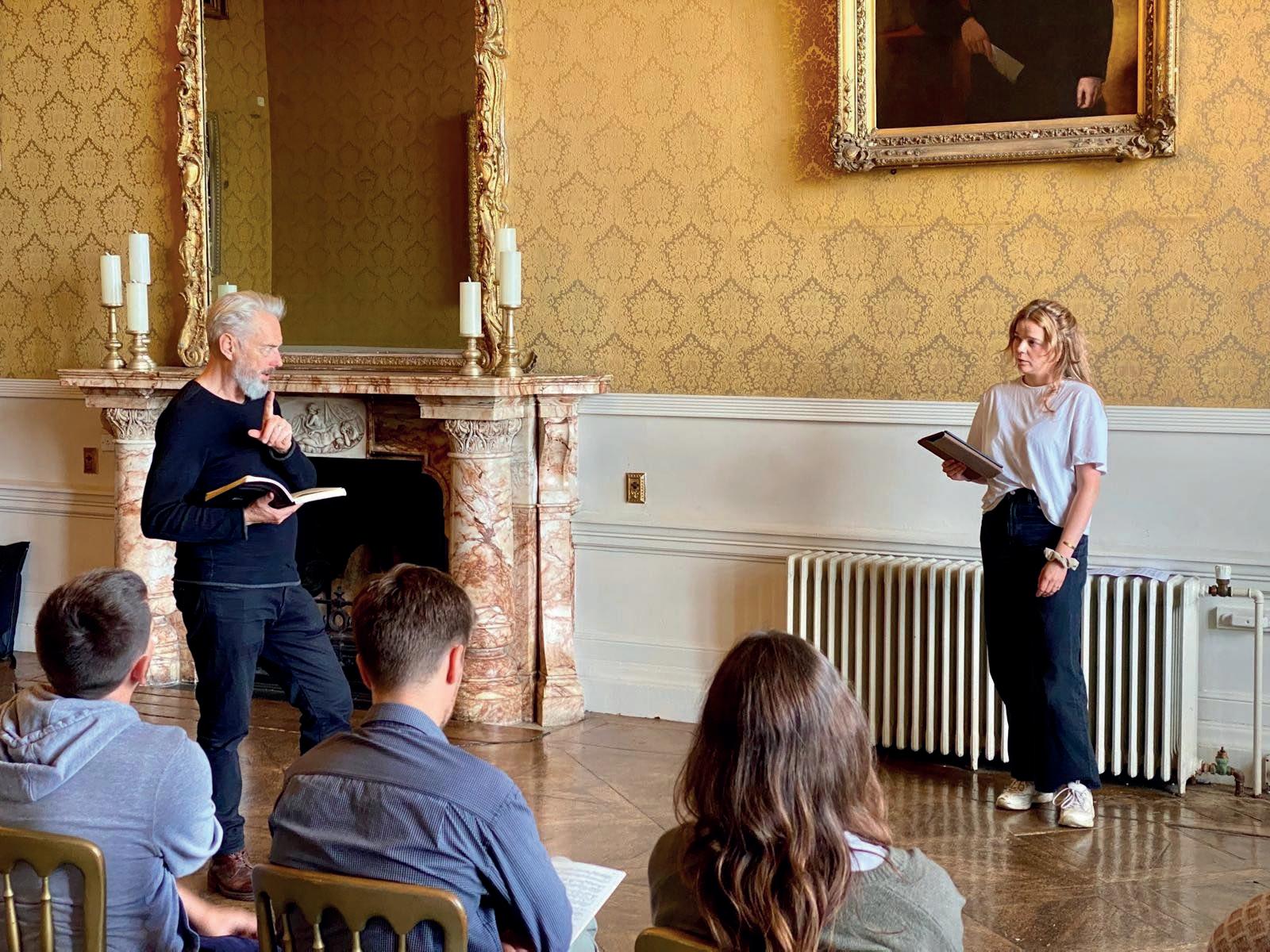
for ensemble singing and a profound understanding of vocal artistry, stylistic versatility and the demands of a modern singing career. As inspirational role models and experienced mentors, they will offer invaluable guidance to the Apprentices, drawing on their wide-ranging professional insight.
The 2025/26 programme is now underway, with many Apprentices having taken part in MCO’s performance of Purcell and Handel in Greenwich earlier this month. Four Apprentices will join the choir for this evening’s concert, while the others will travel to perform this same repertoire at the Teatro Amintore Galli, Rimini in a few days’ time.
The Apprentices have started work together under the direction of Choir Director Jonathan Sells, which began with a three-day residency at Grittleton House, Wiltshire a few weeks ago. They were joined by some of the programme’s mentors as well as Mark Padmore, who led a workshop on Bach’s recitative. The programme is due to feature more coaching, workshops and masterclasses over the coming months, and will culminate in a final recital featuring repertoire they have worked on over the course of the year. More details about each of the nine singers taking part in the current programme can be found on our website (monteverdi.co.uk).
Monteverdi Choir & Orchestras’ (MCO) mission is to bring fresh perspectives, immediacy and drama to historically inspired musical performances around the world. MCO is made up of three internationally-renowned ensembles that lead the field of period performance: the Monteverdi Choir, English Baroque Soloists and Orchestre Révolutionnaire et Romantique. Performing regularly in London concert venues, as well as touring worldwide, MCO is in its 61st year of delivering outstanding performances and recordings to global critical acclaim.
As a registered charity with no public subsidy, the Monteverdi Choir and Orchestras rely on the generosity of our supporters to continue planning our ambitious, historically-informed artistic programme. This support allows us to deliver projects without compromising on artistic quality or integrity, to share our concerts with music lovers around the world through top-quality film and audio content, and helps us to nurture and develop the next generation of musical talent.
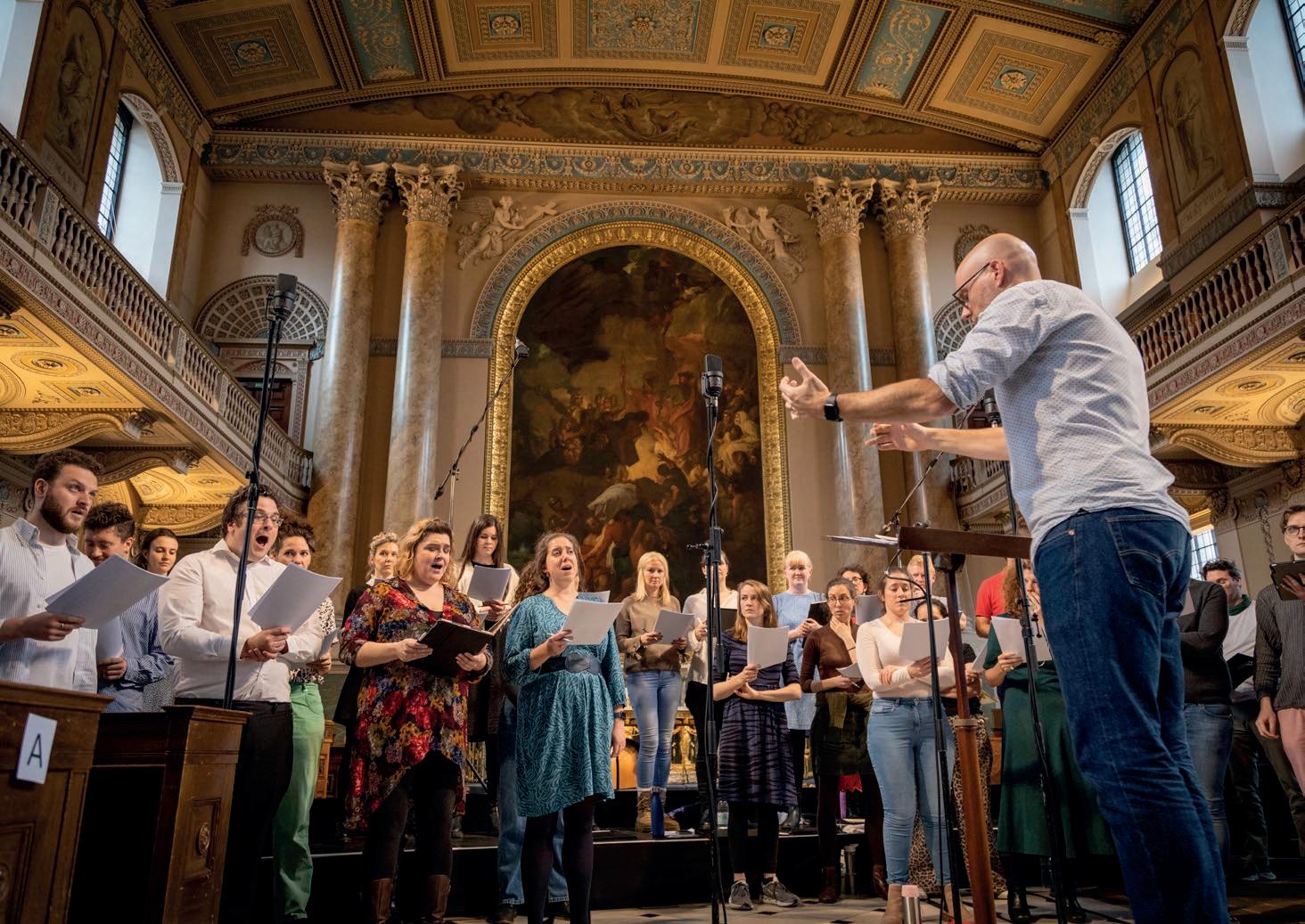
Our membership scheme starts from £250 per year. Members enjoy a range of benefits including a personalised priority booking service for all our concerts, monthly newsletters, and invitations to post-concert receptions. At higher levels, additional benefits include invitations to exclusive open rehearsals and backstage access after our performances.
By supporting our charity at this highest level, you will contribute substantially towards our landmark projects, allow us to perform regularly in our London home at St Martin-inthe-Fields, and share our music globally via our filmed concerts.
We can offer creative and collaborative sponsorship packages that enable you to align your business with our work. There are opportunities to sponsor individual performances, or an entire season of concerts at our London home, St Martin-in-the-Fields.
By choosing to leave a Legacy Gift to the Monteverdi Choir & Orchestras, you will play a crucial role in ensuring that the performers and listeners of the future will continue to be enthralled by the power of our music-making.
Our American Friends play a valuable part in supporting and championing the work of the Monteverdi ensembles both in the US and beyond. The American Friends of the Monteverdi Choir & Orchestras, Inc is a registered 501(c)(3) organisation and donations to it are tax-deductible for US taxpayers to the extent allowed by law. EIN:31-1651106.
If you wish to find out more about supporting MCO please get in touch. On our website, you will find the facility to make a donation (which we warmly welcome at any level), purchase one of our memberships, or treat a friend via a Gift Membership. If you would like to discuss becoming a Benefactor, or how your organisation could partner with us, please contact us to arrange a conversation with our General Director.
development@monteverdi.org.uk www.monteverdi.co.uk/support-us
The Monteverdi Choir & Orchestras gratefully acknowledges the generous support of the following individuals, organisations and Trusts & Foundations:
PATRON
HM The King
PRESIDENT
Carol Grigor CBE
PRINCIPAL FUNDER
Dunard Fund
BENEFACTORS
Michael Beverley
David & Sandra Brierwood
Christian & Myrto Rochat
Sir David & Lady Walker
David Best
Lord & Lady Burns
Morny Davison
Lord & Lady Deben
Sir Vernon Ellis
Andrey Kidel
William Lock
Sebastian & Flora Lyon
Francis Norton
Yoshi Onodera
Helen & John Skinner
Clare Woodman CBE
Anonymous (2)
Lady Virginia Fraser
Sir Stephen Gomersall
Gordon Gullan
Stephen & Victoria Swift
Anonymous (1)
Julia & Martin Albrecht
Geoffrey Barnett
Donald & Corrine Brydon
Rosemary Chadder
Peter & Stephanie Chapman
Sarah & Mike Cuthbert
Tony Hales CBE
Yi-Peng Li
Lady Nixon
Mollie Norwich
Stefan Paetke
Nicholas & Christylle Phillips
Professor Richard Portes CBE FBA
Anthony C. Shoults
Professor John Smyth
Anonymous (2)
Tania Bader
Donald D. Campbell
Vanessa Claypole
Dr Carol Cobb
Steve Edge
Jonathan Edwards
Lady Egremont
Nigel Gibson
Jenny Hill
Mark & Sophie Lewisohn
Robert Moreland
Mary Pinnell
Daan Posthuma
Meghan Purvis
Anne Reyersbach
Thomas Richter
Dr Paul A. Sackin
Steven & Olivia Schaefer
Christopher J. H. Thornhill
Jenny & John Wiggins
Anonymous (4)
Morgan Stanley
& FOUNDATIONS
Dunard Fund
King Charles III Charitable Fund
Garfield Weston Foundation
The David and Claudia Harding Foundation
Mrs F B Laurence’s Charitable Trust
The Rainbow Dickinson Trust
The Thistle Trust
Roger Chadder
Peter J. Chapman
Ian Hay Davison CBE
Sir Henry Keswick
Judith McCartin Scheide
Nicholas Snowman OBE
Geoffrey Taunton
The Estate of Donald Gorman
The Estate of Howard Hodgkin
The Estate of Kevin Lavery
The Negaunee Foundation
William Dudley
Neil Graham
David Kay
Seth Levi
Jai Shekhawat
Rory Walck
With grateful thanks to those who wish to remain anonymous and to the other individuals who give regular donations in support of our work.
Dr Rosa Solinas
General Director
Martin Wheeler
Finance & Administration Manager
James Halliday
Artistic Advisor & Librarian
Matthew Knight
Artistic Planning Manager
Janet Marsden Head of Concerts & Tours
David Kay Philanthropy Manager
Charlotte Walker Development Assistant
Katie Care Administrator
Orlando Jones Administrator
Sophie Southall
Marketing & Communications Assistant
Philip Turbett Orchestra Fixer
Matthew Muller
Stage Manager
Premier Comms
PR & media relations
Big Man Consultancy
Instrument Transport
Edmund Pickering
Keyboard Technician
Sir David Walker (Chairman)
Christian Rochat (Deputy Chairman)
David Best
Lady Deben
Nicholas Eldred
Sir Stephen Gomersall
Diana Houghton
Francis Norton
Caz Weller Knight
Level 12, 20 Bank Street, Canary Wharf, London E14 4AD, UK info@monteverdi.org.uk
Registered in England & Wales Company No. 01277513 Charity No. 272279
SIGN UP FOR OUR NEWSLETTER
What’s On | News | Reviews | Media
Scan the QR code or visit: www.monteverdi.co.uk/ pages/newsletter
LISTEN TO MCO Recordings | Videos | Performances | Podcasts

Scan the Spotify link to listen to the Monteverdi Choir, or buy our recordings at: shop.monteverdi.co.uk
FOLLOW US ON SOCIAL MEDIA

Monteverdi Choir
Orchestre Révolutionnaire et Romantique
Jakob Lehmann – conductor
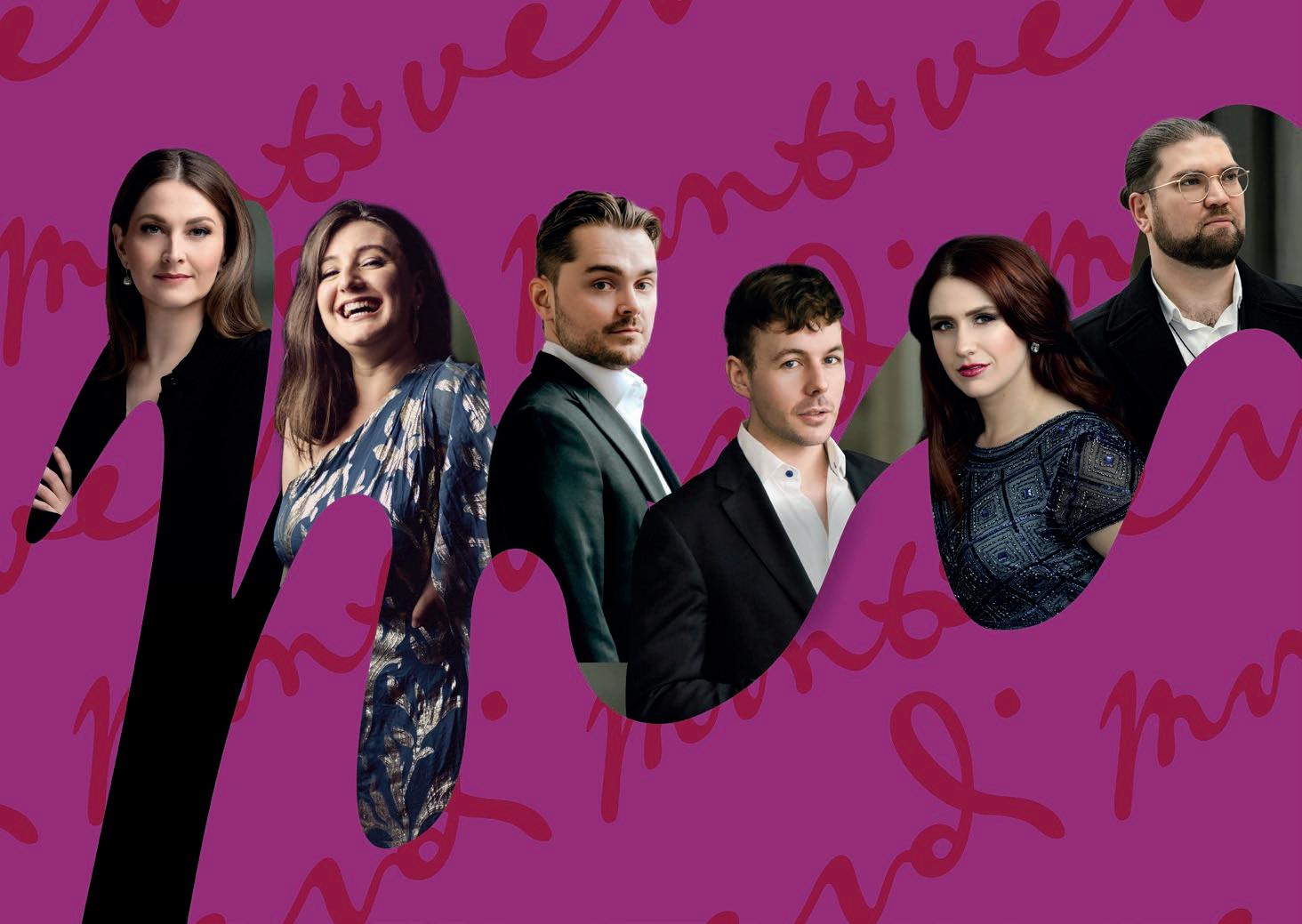
Thursday 2 October 2025, 7.30pm Cadogan Hall
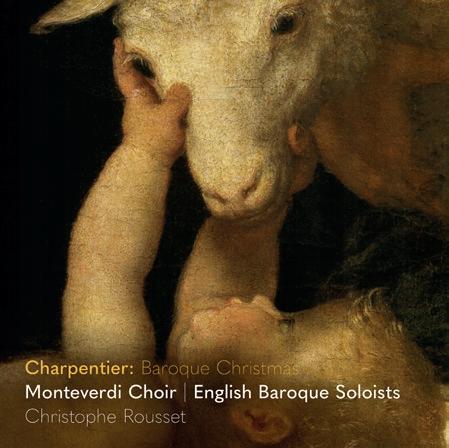
The Monteverdi Choir’s latest album on the award-winning Soli Deo Gloria label:
Conducted by Christophe Rousset, the Monteverdi Choir and English Baroque Soloists usher in Christmas with works by Marc-Antoine Charpentier.
Released on 26 September, CD available for pre-purchase tonight shop.monteverdi.co.uk
